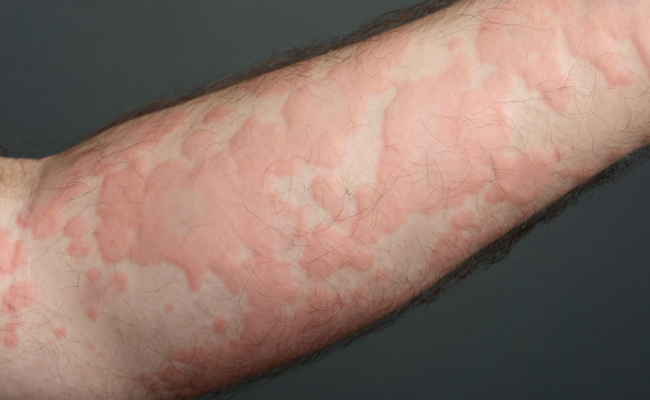How to Treat Anaphylactic Shock?
- January 31, 2024
- No Comments

What is Anaphylactic Shock?
Anaphylactic shock, often referred to as anaphylaxis, is a severe and potentially life-threatening allergic reaction that demands immediate attention and intervention. This extreme allergic response can unfold within mere seconds or minutes of exposure to an allergen, triggering a systemic reaction that affects various organs in the body. Pronounced as “an-ah-fi-LAK-sis,†anaphylaxis is a critical medical emergency that, without prompt treatment, can lead to dire consequences.
Food allergies stand out as one of the primary causes of anaphylaxis. The ingestion of certain foods, such as nuts, shellfish, or eggs, can swiftly induce a severe allergic reaction. In addition to food, anaphylaxis can be triggered by other factors, including stinging insects, medications, and latex. The diverse array of triggers emphasizes the importance of being vigilant and prepared to respond swiftly to any potential allergic threat.
Why Does Anaphylactic Shock Occur?
Anaphylactic shock happens when the immune system overreacts to a substance, treating it as a dangerous invader. Common triggers include certain foods like nuts, shellfish, or eggs, insect stings or bites, medications, and latex. The body's immune response leads to the release of chemicals like histamine, causing a rapid and widespread inflammatory reaction.
How to Identify Anaphylactic Shock?
Recognizing the symptoms of anaphylactic shock is crucial for prompt intervention. Common signs include difficulty breathing, swelling of the face and throat, a rapid or weak pulse, a drop in blood pressure, and a feeling of impending doom. Skin reactions such as hives and itching may also occur.
Respiratory Distress:
- One of the hallmark signs of anaphylactic shock is difficulty breathing.
- Individuals experiencing anaphylaxis may exhibit wheezing, shortness of breath, or a feeling of tightness in the chest.
- Monitoring the person's breathing is essential, as respiratory distress is a key indicator of the severity of the allergic reaction.
Swelling of Face and Throat:
- Anaphylaxis often involves the swelling of the face, lips, and throat.
- This swelling, known as angioedema, can progress rapidly and compromise the airways.
- Paying attention to changes in facial features and the appearance of swelling is crucial in identifying anaphylactic shock.
Rapid or Weak Pulse:
- Changes in heart rate are common during anaphylaxis.
- Individuals may experience a rapid or weak pulse, reflecting the cardiovascular impact of the allergic reaction.
- Checking the pulse can provide valuable information about the severity of the situation.
Drop in Blood Pressure:
- Anaphylactic shock can lead to a sudden drop in blood pressure, a condition known as anaphylactic hypotension.
- This can result in dizziness, lightheadedness, or even loss of consciousness.
- Monitoring blood pressure, when possible, is essential for assessing the cardiovascular implications of the allergic response.
Sense of Impending Doom:
- Many individuals experiencing anaphylactic shock describe a profound sense of impending doom or anxiety.
- This psychological symptom, while subjective, is often reported and should be taken seriously as part of the overall clinical picture.
Skin Reactions:
- Skin manifestations are common in anaphylaxis and can include hives, redness, and itching.
- These reactions may be widespread and rapidly progressing, emphasizing the systemic nature of the allergic response.
- Observing the skin for any sudden changes is crucial in the identification process.
Treatment Solutions for Anaphylactic Shock:
- Epinephrine Administration: The cornerstone of anaphylactic shock treatment is the prompt administration of epinephrine, a life-saving medication. Epinephrine works by narrowing blood vessels and opening airways, counteracting the severe effects of the allergic reaction. Individuals at risk of anaphylaxis should carry an epinephrine auto-injector and know how to use it.
- Seek Emergency Medical Assistance: While epinephrine provides immediate relief, it is not a substitute for professional medical care. After administering epinephrine, it is crucial to call emergency services or go to the nearest emergency room for further evaluation and treatment.
- Supportive Measures: In addition to epinephrine, other supportive measures may be necessary to manage anaphylactic shock. Oxygen therapy may be administered to ensure adequate oxygen supply, and intravenous fluids may be given to counteract the drop in blood pressure.
- Antihistamines and Corticosteroids: Antihistamines and corticosteroids may be used as adjunctive therapy to help control allergic reactions and reduce inflammation. While these medications are not a substitute for epinephrine, they can play a supportive role in managing the aftermath of an anaphylactic event.
Benefits of Timely Anaphylactic Shock Treatment:
Prevention of Fatal Consequences:
- The primary benefit of timely anaphylactic shock treatment is the prevention of fatal consequences.
- Epinephrine administration, when done promptly, can reverse the life-threatening effects of the allergic reaction, providing the individual with a chance for a full recovery.
Reduced Risk of Long-Term Complications:
- Immediate medical intervention helps minimize the risk of long-term complications associated with anaphylactic shock.
- By addressing the allergic reaction promptly, potential damage to vital organs, such as the heart and lungs, is reduced.
Improved Quality of Life for Allergy Sufferers:
- Knowledge and preparedness are key components of effective anaphylactic shock treatment.
- Individuals with known allergies who are educated about their triggers and carry an epinephrine auto-injector can confidently navigate their daily lives, reducing the fear and anxiety associated with severe allergic reactions.
Enhanced Public Awareness and Preparedness:
- Educating the public about anaphylactic shock and its treatment contributes to increased awareness and preparedness.
- This knowledge empowers not only individuals at risk but also those around them, fostering a community that is better equipped to respond in emergencies.
Comments (0)